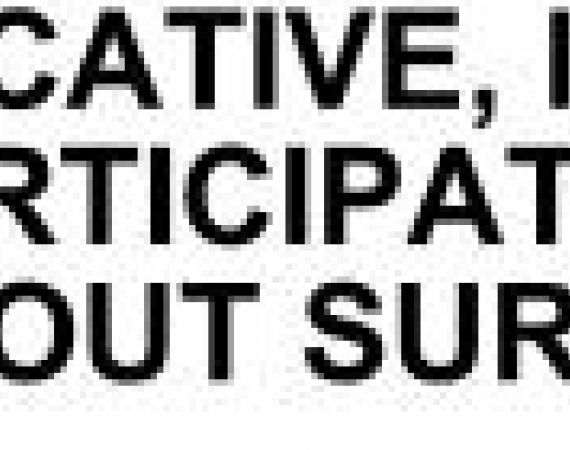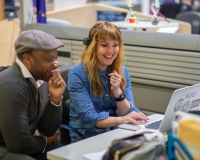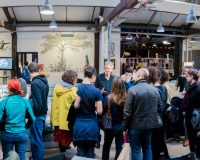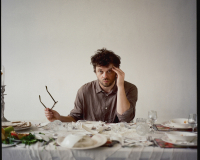Fri 29 May 2009 11:00-20:00
Pop-Up Landscapes: Project Presentation and Seminar Event
Pop-Up Landscapes: Locative Intermedia Project About Survival and InterdependencyPop-Up Landscapes is initiated and directed by Teresa Dillon (IRE/UK). Phase 1 of the project has been completed in collaboration with lok Arquitectura (PT/ES) and Tuomo Tammenpää (FI).

Pop-Up Landscapes: Project Presentation and Seminar Event
Pop-Up Landscapes: Locative Intermedia Project About Survival and Interdependency
Pop-Up Landscapes is initiated and directed by Teresa Dillon (IRE/UK). Phase 1 of the project has been completed in collaboration with lok Arquitectura (PT/ES) and Tuomo Tammenpää (FI).
 Pop-Up Landscapes is an art and research project about survival and interdependency.
Pop-Up Landscapes is an art and research project about survival and interdependency.
 Within Pop-Up Landscapes survival and interdependency are explored through the creation of experiences, which communicate the relations between our individual landscapes and their inherent interdependency to our environs.
Within Pop-Up Landscapes survival and interdependency are explored through the creation of experiences, which communicate the relations between our individual landscapes and their inherent interdependency to our environs.
On the 29th May 2009 the Pop-Up Landscapes team will present the out comes of Phase 1 (October 2008-May 2009) of the project work. Joining the Pop-Up Landscapes team will be anthropologists, Dr. Simone Abram (Leeds Metropolitan University, UK), Gonçalo Velho (Instituto Politécnico de Tomar, Portugal) and architect Peter Tattersall (Helsinki, Finland) as well as members and residents of the Pervasive Media Lab, artist Duncan Speakman and researcher Dr. Constance Fleuriot.
The seminar and demonstration day will take Pop-Up Landscapes as its departure point. Drawing on the above practitioner’s locative art, media and research practices the day will focus on concepts, approaches and methods related to ideas of landscape, interdependency and survival.
If you would like to attend this seminar and presentation day, please book with Genevieve Browne, Pervasive Media Studio Administrator: genevieve@pmstudio.co.uk or call direct on: 0117 9157234
Places are limited, so please book in advance. This event is open to the public and free.
Pop-Up Landscapes is funded by The Finnish Institute, London and the Instituto Politécnico de Tomar and produced in association with Polar Produce, UK and Hangar, Spain. Special thanks to FRAME, Finland, the Pervasive Media Studio and Watershed, UK.
____________________________________________________
Agenda: Pop-Up Landscapes at the Pervasive Media Studio, Bristol
To complete Phase 1 the seminar day at the Pervasive Media Studio Bristol invites practitioners working across the area of landscapes, location, survival and interdependency to share their practice and feedback on the Pop-Up Landscapes project.
10.00-10.30: Welcome and Introductions
10.30-11.30: Presentation of Pop-Up Landscapes: Progress to date
11.30-12.30: Duncan Speakman, PM Studio Resident, Artist Presentation on concepts of location, mobility, performance and sound
12.30-13.30: Lunch
13.30-14.30: Dr. Simone Abram: Lecture 1: Discussion on Landscape
14.30-15.30: Peter Tattersall, Finland: Presentation and Demo of Urban Wiki Planning
15.30-16.00: Break
16.00-17.00; Dr. Constance Fleuriot: mScape presentation and project findings
17.00-18.00: Gonçalo Velho: Lecture 2: Discussion on Landscape
18.00-19.00: Drinks
____________________________________________________
More About Pop-Up Landscape
Pop-Up Landscapes is a project initiated and directed by Teresa Dillon (IRE/UK). Phase 1 of the project took place between October 2008-May 2009. During this period Teresa has been working in collaboration with lok Arquitectura (PT/ES) and Tuomo Tammenpää (FI) exploring the notion of survival and interdependency. This has been directed through three interrelated elements:
Public art installation: The Pop-Up Landscapes installation aims at developing a series of interconnected installations, which are physical apart, for example Bristol and Helsinki but which are digitally connected and interdependent. Within each installation your presence is tracked and influences the immediate, as well as the remote environment. What is revealed depends on your actions and how you respond to those beside you and at a distance.
Seminar Series: The seminar series offers the opportunity to extend the project reach by inviting practitioners working on related issues to present their viewpoints. The aim here is to build up a body of transdisciplinary knowledge, which reflects the project themes.
Community activities: The aim of the community activates is to distill a set of approaches or techniques that reflect the Pop-Up Landscapes themes and which can be used independently by communities and practitioners.
____________________________________________________
Pop-Up Landscape: Current Progress
The first phase of Pop-Up Landscapes took place in the following locations: Helsinki and Kemiö, Finland; Barcelona, Spain and Mação, Portugal with final presentations taking place at the Pervasive Media Studio, Bristol, UK.
Helsinki and Kemiö, Finland: 11-18 Oct 08: This one-week residency in Finland was the first time the team met face-to-face. During this period the focus was on conceptual development and project refinement.
Hangar, Barcelona, Spain: Jan-March 2009: This second residency focused on the technical realization of the first tests of the installation. This was achieved by creating two similar interconnected spaces (Environment A and B). Each environment is made up of a grid of nine sensor tiles and a projected photographic triptych, which is specific to different locations that the installation can be inputted. What is revealed relates to your actual position in the environment, how many people are experiencing it with you and how you respond to the ‘ghost’ of the other in the connected space (e.g., where you are positioned in Environment A, influences what you see in A but also what is revealed in B).
Public tests, workshops and presentations of the installation and project were carried out at Hangar with practitioners from the fields of architecture, design and social research responding to the project goals and installation tests. Public tests of the installation were also carried out as part of the EME3: Collapse, Architecture Exhibition, at CCCB, Barcelona.
Mação, Portugal: 14-26 April 2009: In Mação further technical tests and public presentations were realised. The community activities were also explored for the first time in Mação. Working with senior citizens, primary school children and archaeology students living and working in the town the activities focused on how to communicate a sense of place to another locality and what people would choose to preserve and survive as indicators of their environment.
____________________________________________________
Speakers Biographies:
Pop-Up Landscapes team: Teresa Dillon, lok Arquitectura (PT/ES) and Tuomo Tammenpää (FI).
Teresa Dillon (IRE/UK): Teresa Dillon is an intermedia artist, researcher, producer and director. Thematically her work explores ideas of consumption, survival and the limits and affordances of different tools for communication. She established and directs the intermedia arts company Polar Produce, Bristol/UK, UM Festival, Lisbon, PT and the OFFLOAD-Systems for Survival art-research programme. In 2007 she set up the European media and research network N.I.P. – New Interfaces for Performance. Alongside her arts practice, she plays in the experimental sound-duo BOP with Kathy Hinde and works as an independent consultant and freelance producer/researcher (BBC, Nesta, JISC). She lectures at Cambridge University, UK and holds a PhD in psychology from The Open University. Teresa’s work has been shown internationally at various festivals and conferences and she has published on topics such as creative collaboration, opens source, educational technology and location media.
lok Arquitectura (PT/ES): lok Arquitectura is a creative collective formed in 2008 by architects Pedro Januário Gomes, Pedro Viana, João Trigo and Ana Isabel Valfigueira. As a collective, lok focuses mainly on the development of research studies and realizations in architecture, urbanism and landscape. Individually, they continue to evolve in their professional and academic experiences in different areas and studios across Europe (namely in Portugal, Spain and Holland), crossing the fields of architecture, urbanism, philosophy and art. They currently develop work between Lisbon (PT) and Barcelona (ES), opening their practice to external collaborations and a broader context of international creativity networks.
Tuomo Tammenpää (FI): Tuomo Tammenpää, has a background in visual arts and design. He works as a media artist and designer in Finland sharing his time between practice-based research and development, art productions and commercial design work. After fifteen years of work with interactive installations and screen based design he has focused his work on exploring the potential of physical and ubiquitous computing and tangible media in artistic and design practice. He has been exhibiting awarded interactive media installations in Scandinavia, Europe, North-America and in Asia.
Invited Guests:
Duncan Speakman (UK): Duncan Speakman is an artist based in Bristol, UK. Originally trained as a sound engineer his work now examines how we use sound to locate ourselves in personal and political environments. Seeking out the poetics of the everyday, he creates socially relevant experiences that engage audiences emotionally and physically in public spaces. Alongside his art practice he is a senior lecturer in Media Practice at the University of the West of England and is currently developing site-responsive soundwalks, street games and pervasive theatre works. He has been exhibited internationally and in 2001 was awarded the Clark Trust Bursary for digital arts and has received critical acclaim for his videoblog, 29 fragile days. In 2007 he was peer advisor on the Almost Perfect locative media residency at Banff New Media Institute and since 2008 has been an artist in residence at the Pervasive Media Studio, Bristol.
Dr. Simone Abram (UK): Dr Simone Abram is Reader at the Centre for Tourism and Cultural Change. She is Secretary of the Association of Social Anthropologists of the UK and Commonwealth and a Member of Council of the Royal Anthropological Institute. Her research interests encompass the anthropology of planning, tourism and sociology of science. She has done extensive ethnographic fieldwork in France (1991-2), England (1997) and Norway (2000), and has been a visiting fellow at the universities of Oslo and Gothenburg, and at the Maison des Sciences de l’Homme (Paris).
Peter Tattersall (FI): Architect Peter Tattersall has been developing the concept of wiki planning as part of a wider attempt to consider what the implications of web 2.0 might be on architecture and planning, and whether or not social media (and phenomena arising from it) might be used to make planning more democratic. Wiki planning is under development as a method for bringing the values of lay-people into the design process. The intention is to develop a new method of public participation for use in as part of the planning process of municipal planning authorities. The process uses miniature wooden models to support their thinking of the design of the urban space. Their models are photographed and transformed into architectural sketches and maps. Alongside his architecture practice Peter works for the Finnish environmental think-tank Dodo.
Dr. Constance Fleuriot (UK): Dr Constance Fleuriot is a Producer at the Pervasive Media Studio, working on public engagement and academic projects. As a Research Associate at Bristol University, Constance was one of the principal investigators on the Mobile Bristol Project investigating the social impact of emerging pervasive and mobile technologies. Since then she has been working as a freelance consultant in user research and locative media design, and facilitating location-based mixed-media projects with a variety of user communities. She worked on the development of the Futurelab createascape website, a resource for pupils and teachers on how to use HPlabs mscape software in an educational setting. She also has her own company called featherhouse.
mobilebristol.com
featherhouse.com
Gonçalo Velho (PT): Gonçalo Leite Velho is lecturer in the Instituto Politécnico de Tomar and is currently finishing his PhD in Archaeology in Porto University Faculty of Arts. His PhD thesis centers on the problematics of the (re)construction of an monumental hill from the III-II millennium B.C. (Castelo Velho de Freixo de Numão). In his research he has explored the themes of landscape, time, architecture, GIS and 3D.
In the past years he has been part of several European projects. In this moment this involvement includes the projects: Trans-formations (a project involving the areas of Archaeology, Architecture, Landscape Studies and Fine Arts, directed to explore the concepts of techne and Poiesis in Landscape “Hervorbringen”, as a mean for sustain development), Travel in Europe (a MMOG with Heritage as main theme, and concentrated on the integration of new interfaces), Hallerstein (a project involving China, Slovenja and Austria centered on the XVIII century character of Hallerstein).


